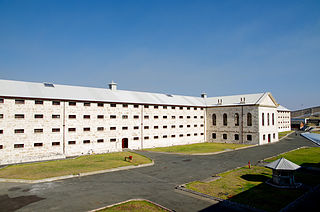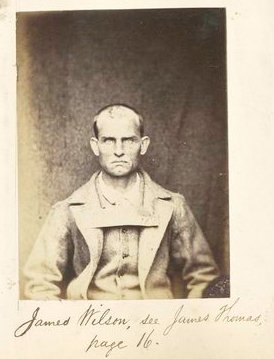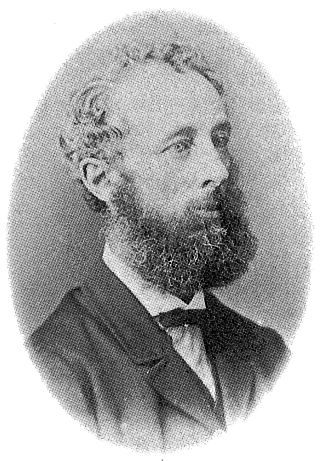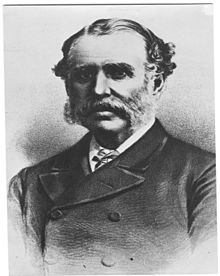
John Stephen Hampton was Governor of Western Australia from 1862 to 1868.

Joseph Bolitho Johns, better known as Moondyne Joe, was an English convict and Western Australia's best-known bushranger. Born into poor and relatively difficult circumstances, he became something of a petty criminal robber with a strong sense of self-determination. He is remembered as a person who had escaped multiple times from prison.

Fremantle Prison, sometimes referred to as Fremantle Gaol or Fremantle Jail, is a former Australian prison and World Heritage Site in Fremantle, Western Australia. The site includes the prison cellblocks, gatehouse, perimeter walls, cottages, and tunnels. It was initially used for convicts transported from Britain, but was transferred to the colonial government in 1886 for use for locally-sentenced prisoners. Royal Commissions were held in 1898 and 1911, and instigated some reform to the prison system, but significant changes did not begin until the 1960s. The government department in charge of the prison underwent several reorganisations in the 1970s and 1980s, but the culture of Fremantle Prison was resistant to change. Growing prisoner discontent culminated in a 1988 riot with guards taken hostage, and a fire that caused $1.8 million worth of damage. The prison closed in 1991, replaced by the new maximum-security Casuarina Prison.

Lieutenant-Colonel Sir Edmund Yeamans Walcott Henderson was an officer in the British Army who was Comptroller-General of Convicts in Western Australia from 1850 to 1863, Home Office Surveyor-General of Prisons from 1863 to 1869, and Commissioner of Police of the Metropolis, head of the London Metropolitan Police, from 1869 to 1886.

The convict era of Western Australia was the period during which Western Australia was a penal colony of the British Empire. Although it received small numbers of juvenile offenders from 1842, it was not formally constituted as a penal colony until 1849. Between 1850 and 1868, 9,721 convicts were transported to Western Australia on 43 convict ship voyages. Transportation ceased in 1868, at which time convicts outnumbered free settlers 9,700 to 7,300, and it was many years until the colony ceased to have any convicts in its care.

George Essex Hampton was an unpopular public official in colonial Western Australia.

WAY 79, also referred to as WAY '79 and WAY 1979, was the official 1979 sesquicentennial celebration of the European colonisation of Western Australia.
Thomas Hill Dixon was the first Superintendent of Convicts in Western Australia. Together with his superior, the Comptroller General Edmund Henderson, he created a reforming, humane convict regime for Western Australia. Recognition of his achievements has however been eroded by his later indictment on charges of embezzling public moneys.
John Vernon Warren was a convict transported to Western Australia. He was one of only 39 such convicts from the 9721 convicts transported to the colony to overcome the social stigma of convictism to become schoolteachers.
Following Western Australia's convict era, 37 ex-convicts were appointed school teachers in the colony. The appointment of such a large number of ex-convicts to what was considered a respectable government position was highly unusual for a penal colony, as the social stigma of conviction usually excluded ex-convicts from such positions.
Scindian is widely considered the first convict ship to transport convicts to Western Australia. She was launched in 1844 and sank in 1880.
William Chopin was a convict transported to colonial Western Australia. After gaining his ticket of leave he worked as a chemist and later as a provider of illicit abortions.

Western Australia was a crown colony from its establishment in 1829 as the Swan River Colony until the advent of representative government in 1870. During this time executive and legislative power was vested in the Governor of Western Australia, but from 1832 he had Executive and Legislative Councils to assist and advise him. The Western Australian Legislative Council met for the first time on 7 February 1832. This is a list of members of the Western Australian Legislative Council between 1832 and 1870.

In 1929, Western Australia (WA) celebrated the centenary of the founding of Perth and the establishment of the Swan River Colony, the first permanent European settlement in WA. A variety of events were run in Perth, regional areas throughout the state, and even across Australia such as the Western Australian Centenary Air Race.

The Swan River Mechanics' Institute was the Swan River Colony's first cultural centre, established on 21 January 1851. In time it was to house an extensive and well-used subscription library and a natural history collection, including botanical, zoological and mineral specimens. A new building replaced the old in 1899, and in 1909 the institute was renamed Perth Literary Institute.
The history of Fremantle Prison, a former Australian prison in Fremantle, Western Australia, extends from its construction as a prison for convicts, using convict labour, in the 1850s, through to its modern-day usage as a tourist attraction. The design for Fremantle Prison was based on the Pentonville Prison in Britain, and it would be the longest, tallest prison cell block in the southern hemisphere. Construction began in 1851, and was completed by the end of 1859. The prison was transferred to the colonial government in 1886 for use for locally sentenced prisoners. Following a Royal Commission held in 1898−99, some changes were made to Fremantle Prison, including knocking down the inner wall between two cells, introducing a prisoner classification system, and constructing internal walls in the main block to create four separate divisions. A new cell block, New Division, was completed in 1907 and occupied in 1908.
Staff and prisoners of Fremantle Prison occupied the former prison on The Terrace, Fremantle, in Western Australia, between 1855 and 1991. Fremantle Prison was administered by a comptroller general, sheriff, or director, responsible for the entire convict or prison system, and a superintendent in charge of the prison itself. Prison officers, known as warders in the 19th century, guarded against escapes, enforced discipline, oversaw prisoner work, and instructed inmates in trades. Officers worked under stringent conditions until they achieved representation through the Western Australian Prison Officers Union. Convicts were initially of good character, as potential future colonists, but eventually less desirable convicts were sent, until the end of transportation in 1868. As a locally run prison, Fremantle's population was generally short-sentenced white prisoners in the 1890s, with very few Aboriginal prisoners; however, by the late 20th century, most prisoners were serving longer sentences, a higher proportion of them were violent, and Aboriginal people were over-represented.
John Acton Wroth (1830–1876) was a convict transportee to the Swan River Colony, and later a clerk and storekeeper in Toodyay, Western Australia. He kept a personal diary that recorded life on board the transport ship and his experiences at the country hiring depots of York and Toodyay. This diary is lodged in the archives of the State Library.
Construction of the new Toodyay Convict Hiring Depot began in February 1852 and was completed by 1856. The depot was closed in 1872. The site chosen, Avon Location 110, was an area of Crown land measuring just over 18 hectares. It was situated approximately 4.8 kilometres (3 mi) upstream from the site of the previous Toodyay Convict Hiring Depot (1851) located at the Toodyay townsite. The previous depot had only ever been a temporary arrangement born of necessity when accommodation was required at short notice. The new depot site was surveyed by Francis Thomas Gregory in 1852.
William Nairne Clark (1804–1854) was a public notary and publisher, active at the Swan River Colony and Tasmanian settlements founded in Australia.










